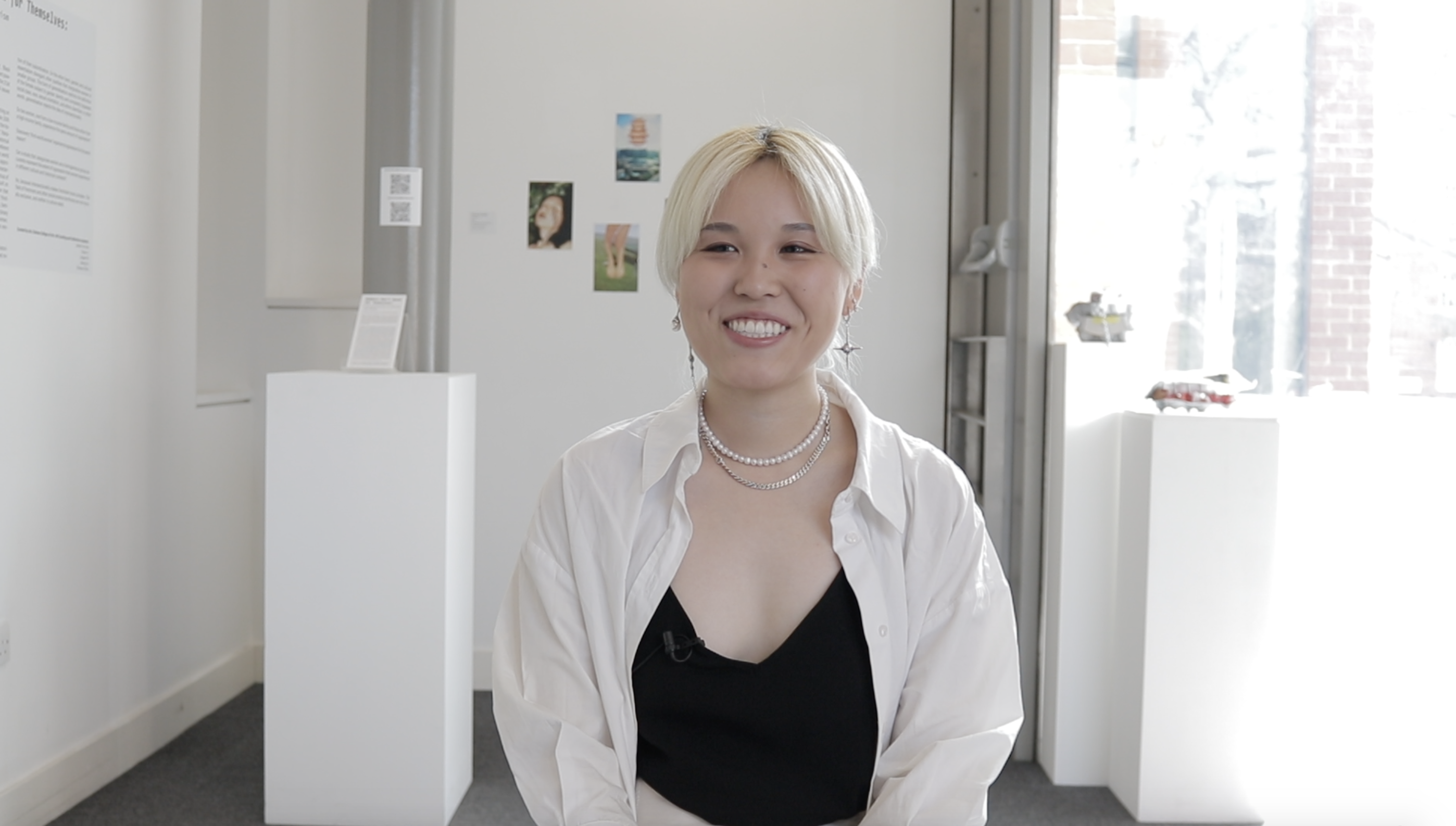
Meet Jessie Gao: The economics-graduate-turned-curator making art more accessible

- Written byAnnika Loebig
- Published date 28 December 2022

As is the case with many UAL creatives, Jessie Gao’s creative journey has been far from linear. She first studied art at A-level when attending international school, after which she decided to apply for an illustration course in Canada. However, Jessie quickly became disillusioned with the course’s commercialised focus on arts practices and eventually decided to quit.
“My own work was always very personal and centered around my interests, so when my tutor started interfering with my creative output, I stopped wanting to be an artist but still wanted to be involved with the art world somehow.”
Suddenly the former art student was pivoting into economics but it wasn’t too long before she realised that her degree’s foundational understanding of social sciences would in fact support her subsequent studies on Chelsea College of Arts’ MA Curating and Collections course.
“During my economics studies, I visited a lot of museums and became very analytical about curations,” Jessie recalls. “I fell in love with the concepts of exhibitions which made me want to become a curator rather than an artist.”

One of her main interests related to exhibition-making involves public art. Thinking about how art could be exhibited differently, and in ways that go beyond migrating it online, became particularly pertinent during the Covid-19 lockdowns. The answer? Exhibiting art outdoors.
It was ‘Unreal City’, a public festival of augmented reality art, curated by Daniel Birnbaum and presented in response to lockdown measures, which first piqued Jessie's interest in using technology in her exhibition concepts.
Another public outdoor exhibition which inspired her was WANDER ART by Alter-Projects, set up to celebrate London’s iconic architecture, which would later influence her interest in accessibility.
“The term ‘accessibility’ is not entirely related to disabilities though,” she explains.
“My focus is about how the relationship of stakeholders of exhibitions – the audience, the artists and the curators – can be interchanged. So, when I talk about access, it could be how an audience accesses the exhibition: Would it be virtual or physical? Can an artist access the curators? Can their art be exhibited without any restrictions? This especially applies to large installations and maybe digital work, as well as financial restrictions.”
“Then there’s the curator: Would we be restricted by the institution’s ideas and thoughts and ethics? I think ‘accessibility’ is actually a very large term and sometimes it’s a bit misinterpreted; it’s important to explore this area.”
Her interests in extended reality technology, architecture and social sciences serve her well when exploring issues around accessibility; from challenging curatorial concepts such as the White Cube – a common curated space characterised by its white walls and one-directional light shining from the ceiling – to eliminating what she calls the “hierarchies and collectors atmosphere” in the art world, which might make audiences feel like they’re not welcome in a space.
“When you visit commercial galleries in London, they’re often in small buildings where you need to ring up. So, during my first visits, I was so intimated by what galleries were doing,” Jessie remembers.
“If you have a sculpture outdoors, everyone is potentially invited. There are no boundaries of who gets to see what. I know a few of my friends feel intimated by art and never go to galleries alone.”
She explains that abstract features of many exhibitions can also make collections less accessible to audiences, and that incorporating immersive, virtual reality elements in her future work might help eliminate some of those barriers.

During a project on her course called ‘The Agile Exhibition’, Jessie’s group had the chance to freely flex some of their developing curatorial muscles. They decided to curate an exhibition related to feminism, with a particular focus on intersectionality.
“A lot of people tend to oversee intersectionality, which explains how different factors or multiple forms of inequality sometimes compound and then form different types of discrimination.”
“So, we considered race, gender, sexual orientation, class; every little detail about who you are and how you’ve experienced your life that influences the forms of discrimination you experience.”
The group then allocated forms of feminist discourse to the artists’ work they exhibited, some of which discussed themes such as colonisation and orientalism within feminism.
“It wasn’t naturally interesting to me at first,” she explains.
“But after some digging, I learned how it relates to how our society is built today and thought it was interesting to think about how intersectionality and feminism relate to accessibility.”
“Everything is interchangeable and interconnected.”